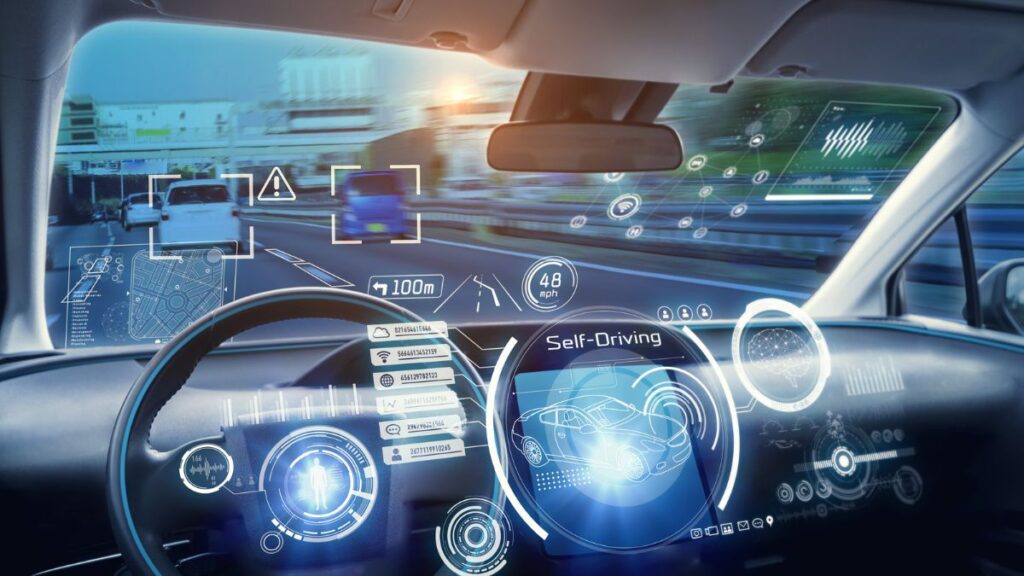
Digital distractions like talking on the phone, responding to text messages and using Google Maps to find the newest restaurant in Greenville while driving lead to serious car accidents that are avoidable.
The Facts about Texting and Driving
Looking at some key car crash statistics due to digital distractions will provide context for the danger in choosing to text and drive.
Car accidents involving DUI have the highest fatality rate. While drinking and driving wrecks are far less frequent than cell phone-related collisions. You’re six times more likely to cause an accident by texting and driving than DUI.
Cell phone usage is responsible for 25 percent of all car accidents in the United States, making it the No. 1 cause of car crashes. DUI car accidents are more likely to result in severe injury or death in a one-to-one scenario. However, the fact that digital distractions happen far more frequently makes texting and drive just as risky as getting behind the wheel intoxicated. After all, any car accident can be fatal. Every driver who uses a cell phone is pressing their luck and risking the safety of other travelers on the road.
Here are five additional facts to keep in mind.
1. Teen Driving
Driving a car is a beautiful experience for teens. However, the combination of an inexperienced teen driver and a smartphone is a disaster waiting to happen.
Fact: Teen drivers are 400 percent more likely to crash a vehicle while texting than adults.
2. Teen Fatalities
Car accidents are the No. 1 cause of death among teens. Driving is a skill that takes time to recognize and avoid potential problems on the road. Unfortunately, teen drivers often lack the experience to escape an avoidable situation. Then, when you add a smartphone to the equation, the results are often fatal.
Fact: According to an Edgar Snyder & Associates article, “21 percent of teen drivers involved in fatal accidents were distracted by their cell phones.”
3. Change in Technology
A lot can change in 10 years. In 2008, Twitter was starting to hit its stride, the first Android phone launched and Apple introduced the App Store.
Fact: A study conducted by the Virginia Tech Transportation Institute, found that the risk of a car accident due to text messaging is 23 times higher than a non-distracted driver.
This study was conducted in 2009 when smartphones weren’t so universal and even then text messaging was incredibly distracting.
Can you imagine how much higher the risk of a car accident due to text messaging would be in today’s digital society?
4. The Length of Digital Distractions
Looking at your cell phone distracts you far longer than you realize.
Fact: The speed limit on I-385 is 55 mph. Reading a text message at that speed takes your eyes off the road for about 5 seconds, which is enough speed and time to travel the length of a football field.
5. Miscellaneous Statistics
Here are a few additional facts about texting and driving.
- Approximately 481,000 drivers use their cell phones during daylight hours. Source: NHTSA
- In 2015, 391,000 drivers were injured and 3,450 died in 2016 in crashes involving a distracted driver. Source: NHTSA
- 400 percent increase in the amount of time your eyes are off the road. Source: Geotab
Let’s end this section by revisiting the earlier DUI and digital distractions comparison. While DUI usually results in more fatal car accidents, texting and driving wrecks occur more frequently.
These distractions have a far more similar effect on the brain than you realize. Talking on the phone impairs your driving capabilities as much as an intoxicated driver with a .08 Blood-Alcohol Concentration (BAC).
Distraction Dissection
The word “distraction” is often used in car accident scenarios. With that in mind, let’s take a step back and dissect the different elements of distracted driving.
Three Types of Distracted Driving
Distraction: a thing that prevents someone from giving full attention to something else.
Distracted driving is anything that takes your full attention away from driving. There are three different types of distracted driving.
- Cognitive distracted driving: The driver’s eyes are on the road, hands are on the wheel, but the mind is elsewhere.
- Examples: Talking to passengers, rage towards a reckless driver that just cut you off, DUI, etc.
- Manual distracted driving: The driver takes his hands off the wheel.
- Examples: Reaching for the phone, eating, changing the radio station, etc.
- Visually distracted driving: The driver looks at anything other than the road ahead.
- Examples: Reading a text message, looking at a car accident on the side of the road, taking in the view, etc.
Texting and Driving
Using a cell phone while driving falls under all three of the distraction types. Visual involves looking at your phone, instead of the road. Manual involves typing a text message, which takes your hands off the steering wheel. Cognitive involves concentrating on the conversation rather instead of the road around you.
Texting and driving more than just a distraction
The word “decision” means “To make a final choice or to select a course of action.”
Distractions are created out of bad decisions. For instance, a driver picks up their phone to respond to a text message. The action of picking up the phone represents the decision part of the relationship. The phone itself is the distraction that is taking your full attention off the road.
Therefore, by deciding to ignore or turn off your phone while driving, you remove the temptation of digital distraction.
Wrap Up
Texting and driving is a serious problem that falls under every type of driving distraction. Now that you understand the facts about digital distractions and how decisions enable distractions to take place, it’s time to provide some solutions to the problem.
Part 4 provides several different strategies to prevent digital distractions.
If you’re injured in a car accident involving a distracted driver, please don’t hesitate to contact Thomas Creech Law Offices to discuss your options. Thomas Creech is a lifelong resident of Greenville and utilizes his 20 years of courtroom experience to fight for seriously injured clients throughout The Upstate of South Carolina.
You can request a free consultation by phone at 864-235-4999, or simply fill out the form below.
[contact-form-7 id=”3838″ title=”Contact Us”]


